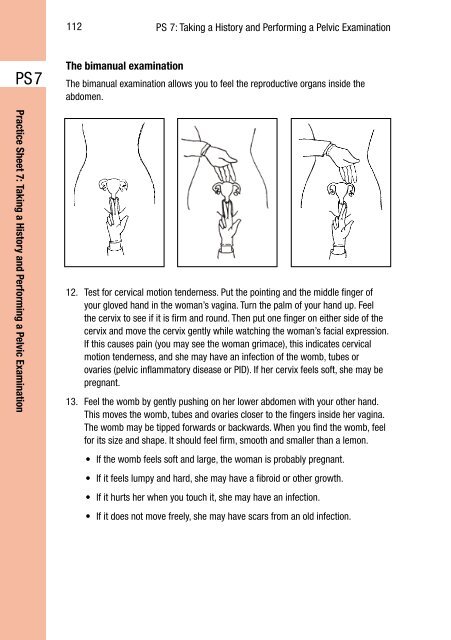CHAPTER 4: SCREENING FOR CERVICAL CANCER
CHAPTER 4: SCREENING FOR CERVICAL CANCER
CHAPTER 4: SCREENING FOR CERVICAL CANCER
Create successful ePaper yourself
Turn your PDF publications into a flip-book with our unique Google optimized e-Paper software.
112PS 7: Taking a History and Performing a Pelvic ExaminationPS 7The bimanual examinationThe bimanual examination allows you to feel the reproductive organs inside theabdomen.Practice Sheet 7: Taking a History and Performing a Pelvic Examination12. Test for cervical motion tenderness. Put the pointing and the middle finger ofyour gloved hand in the woman’s vagina. Turn the palm of your hand up. Feelthe cervix to see if it is firm and round. Then put one finger on either side of thecervix and move the cervix gently while watching the woman’s facial expression.If this causes pain (you may see the woman grimace), this indicates cervicalmotion tenderness, and she may have an infection of the womb, tubes orovaries (pelvic inflammatory disease or PID). If her cervix feels soft, she may bepregnant.13. Feel the womb by gently pushing on her lower abdomen with your other hand.This moves the womb, tubes and ovaries closer to the fingers inside her vagina.The womb may be tipped forwards or backwards. When you find the womb, feelfor its size and shape. It should feel firm, smooth and smaller than a lemon.• If the womb feels soft and large, the woman is probably pregnant.• If it feels lumpy and hard, she may have a fibroid or other growth.• If it hurts her when you touch it, she may have an infection.• If it does not move freely, she may have scars from an old infection.
















